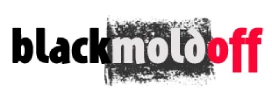In terms of cheese, not all mold should be a reason to worry. In reality, certain cheeses rely on mold as a necessary step in their aging process. However, it is important to know which molds are safe for consumption and which ones are not, as this knowledge is vital for both one’s pleasure and well-being.
Safe Molds in Cheese
Several types of cheese, including Brie, Roquefort, Gorgonzola, and Camembert, are produced using molds that are safe to eat. These molds are deliberately added to the cheese to enhance its taste, consistency, and fragrance.
- White Mold: Soft cheeses such as Brie and Camembert possess a white outer layer, known as a rind, that actually consists of a type of white mold that is completely safe to consume.
- Blue/Green Mold: Blue or green veins of mold can be found in cheeses such as Roquefort, Gorgonzola, and Stilton. This mold, known as Penicillium roqueforti or Penicillium glaucum, is completely safe for consumption.
Unsafe Molds on Cheese
Nevertheless, in the case of cheese, certain molds can grow and pose a risk if the cheese has not been stored correctly or if it has exceeded its expiration date. When such molds appear on cheeses that are not intended to have mold, they can be dangerous:
- Black Mold or Pink/Yellow Molds: If you see mold of colors like black, pink, or yellow, it’s a sign of spoilage, and these unscheduled guests can produce harmful mycotoxins.
- Fuzzy Mold: A fuzzy mold that wasn’t there when you purchased the cheese is usually not a good sign, especially on soft cheeses, which should be discarded if they show any signs of such mold.
Handling Mold on Cheese
Here’s how you should handle mold on various types of cheese:
- Soft Cheeses: Since they have more moisture, molds can penetrate these cheeses more easily. If you spot a mold that doesn’t belong, it’s best to dispose of the entire cheese.
- Semi-Soft Cheeses: For these, you may be able to salvage the cheese by cutting at least 1 inch around and below the mold. Be careful not to touch the mold with the knife to avoid contamination.
- Hard Cheeses: When dealing with hard cheeses, it is generally advisable to remove the affected area by cutting at least 1 inch in circumference around and below the moldy section.
Prevention
To avoid unintentional mold growth, storing cheese properly is key:
- Temperature: Keep cheese refrigerated.
- Humidity: Store it in a way that balances humidity to prevent it from drying out without encouraging mold.
- Separation: Keep strongly flavored cheeses wrapped separately so their molds do not cross-contaminate other cheeses.
Conclusion
In summary, molds are an essential part of many cheeses, but it’s important to know the difference between intentional molds and those that indicate spoilage. When handled and stored correctly, cheese can be enjoyed safely – including some of its molds. If ever in doubt, err on the side of caution and dispose of any cheese with unexpected or unusual mold growth.

